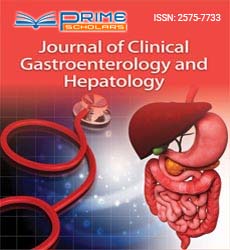Perspective - (2023) Volume 7, Issue 5
Exploring the Global Impact of Hepatocellular Carcinoma: Beyond the Liver
Niko Valdes*
Department of Gastroenterology, University of Copenhagen, Denmark
*Correspondence:
Niko Valdes,
Department of Gastroenterology, University of Copenhagen,
Denmark,
Email:
Received: 02-Oct-2023, Manuscript No. IPJCGH-23-18379;
Editor assigned: 04-Oct-2023, Pre QC No. IPJCGH-23-18379 (PQ);
Reviewed: 18-Oct-2023, QC No. IPJCGH-23-18379;
Revised: 23-Oct-2023, Manuscript No. IPJCGH-23-18379 (R);
Published:
30-Oct-2023, DOI: 10.36648/2575-7733.7.5.48
Introduction
Hepatocellular Carcinoma is a primary liver cancer that arises
from hepatocytes, the main cells of the liver. As one of the
most common types of liver cancer, it poses a significant global
health challenge. In this article, we will explore the causes,
symptoms, and treatment options for Hepatocellular Carcinoma.
Hepatocellular Carcinoma often develops in the context of
chronic liver diseases, with chronic viral hepatitis, cirrhosis, and
alcoholic liver disease being prominent risk factors. Other risk
factors include non-alcoholic fatty liver disease, hemochromatosis,
and exposure to aflatoxins, naturally occurring toxins produced
by certain molds. Hepatocellular Carcinoma symptoms
may not manifest until the disease has reached an advanced
stage.
Description
Early-stage symptoms can include abdominal pain, unexplained
weight loss, and a palpable mass in the abdomen. As the disease
progresses, individuals may experience jaundice, ascites
fluid accumulation in the abdomen, and general fatigue. Regular
screenings for individuals with risk factors are crucial for
early detection. The diagnosis of involves a combination of
medical history analysis, physical examinations, imaging studies,
and laboratory tests. Radiological imaging, such as ultrasound,
CT scans, and MRI, is commonly used to visualize liver
abnormalities. Additionally, blood tests measuring alpha-fetoprotein
levels can aid in the diagnosis and monitoring of. Staging
is essential for determining the appropriate treatment plan.
The Barcelona Clinic Liver Cancer staging system is widely used
categorizing patients into different stages based on tumor size,
number of tumors, vascular invasion, and liver function. Staging
guides clinicians in choosing the most suitable treatment
approach. For early-stage, surgical removal of the tumor or a
liver transplant may be considered. However, this option is often
limited by factors such as the size and location of the tumor
and the overall health of the patient. Ablation techniques, including
radiofrequency ablation and microwave ablation, use
heat to destroy cancerous cells. These minimally invasive procedures
are suitable for patients with small tumors who are not
candidates for surgery involves injecting chemotherapy drugs
directly into the blood vessels supplying the tumor, followed by
the embolization of these vessels. This approach is effective in
managing intermediate-stage and helps to limit tumor growth.
Sorafenib and lenvatinib are oral medications that target specific
molecular pathways involved in the growth of cancer cells.
These targeted therapies are used for advanced-stage and can
slow down tumor progression. Immune checkpoint inhibitors,
such as nivolumab and pembrolizumab, have shown promise
in the treatment of by enhancing the body’s immune response
against cancer cells. Immunotherapy is particularly considered
in cases where other treatments have not been successful. The
prognosis for varies based on the stage at diagnosis and the
chosen treatment. Early detection significantly improves the
chances of successful treatment.
Conclusion
Regular screening for individuals with risk factors is crucial for
early intervention. Preventive measures include vaccination
against hepatitis B, which is a major risk factor for HCC. Additionally,
lifestyle modifications such as limiting alcohol consumption,
maintaining a healthy weight, and managing underlying
liver diseases can contribute to reducing the risk of
developing. Hepatocellular Carcinoma is a formidable health
challenge, often arising in the context of chronic liver diseases.
Early detection and a multidisciplinary approach to treatment
are crucial for improving outcomes. Advances in medical research
continue to expand treatment options, providing hope
for those affected by this complex and often asymptomatic
disease. Public awareness, preventive measures, and regular
screenings are pivotal in the fight against Hepatocellular Carcinoma.
Citation: Valdes N (2023) Exploring the Global Impact of Hepatocellular Carcinoma: Beyond the Liver. J Clin Gastroenterol Hepatol.
7:48.
Copyright: © 2023 Valdes N. This is an open-access article distributed under the terms of the Creative Commons Attribution
License, which permits unrestricted use, distribution, and reproduction in any medium, provided the original author and source
are credited.

